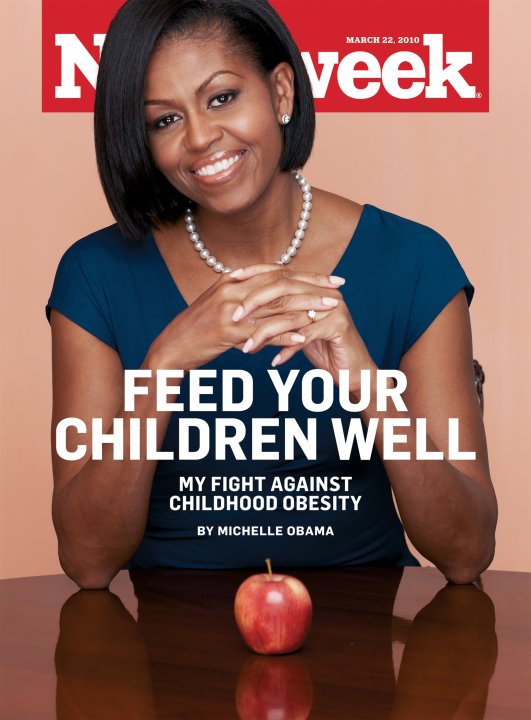Photos from Style Me Gorgeous
Entries Tagged 'Kids' ↓
Children’s Party Inspiration
May 1st, 2010 — Babies, Kids, Party Planning
Pom Pom Love
May 1st, 2010 — Babies, Interior Design, Kids, Party Planning
I always see these fun colorful pom poms hanging over charming tables at bridal showers, baby showers or like shown below to decorate a child’s bedroom. I assumed you had to spend grueling hours constructing each little pom from scratch until I discovered the company PomLove or as they like to call it “Happy Floating Paper.” Each Pom is available in an assortment of rainbow colors. Ranging from $5.00 each, 7 Poms for $30.00, or a 20 Poms for $75.00. – THE WIFE
WIFE Michelle Obama on a Mission
March 19th, 2010 — Health, Kids
For years, we’ve known about the epidemic of childhood obesity in America. We’ve heard the statistics—how one third of all kids in this country are either overweight or obese. We’ve seen the effects on how our kids feel, and how they feel about themselves. And we know the risks to their health and to our economy—the billions of dollars we spend each year treating obesity-related conditions like heart disease, diabetes, and cancer.
But we also know that it wasn’t always like this. Back when many of us were growing up, we led lives that kept most of us at a pretty healthy weight. We walked to school every day, ran around at recess and gym and for hours before dinner, and ate home-cooked meals that always seemed to have a vegetable on the plate.
For many kids today, those walks to school have been replaced by car and bus rides. Afternoons playing outside have been replaced with afternoons inside with TV, videogames, and the Internet. And with many parents working longer hours, or multiple jobs, they don’t have time for family meals around the table anymore.
It’s now clear that between the pressures of today’s economy and the breakneck pace of modern life, the well-being of our kids has too often gotten lost in the shuffle.
And let’s be honest with ourselves: our kids didn’t do this to themselves. Our kids don’t decide what’s served in the school cafeteria or whether there’s time for gym class or recess. Our kids don’t choose to make food products with tons of sugar and sodium in supersize portions, and then have those products marketed to them everywhere they turn. And no matter how much they beg for fast food and candy, our kids shouldn’t be the ones calling the shots at dinnertime. We’re in charge. We make these decisions.
That’s actually the good news—that we can decide to solve this problem. That’s why we started Let’s Move, a nationwide campaign with a single goal: to solve the problem of childhood obesity in a generation, so that children born today can reach adulthood at a healthy weight.
Let’s Move is not about trying to turn back the clock to when we were kids, or cooking five-course meals from scratch every night. No one has time for that. And it’s not about saying no to everything either. There’s a place for cookies and ice cream, burgers and fries—that’s part of the fun of childhood.
Instead, Let’s Move is about families making manageable changes that fit with their schedules, their budgets, and their needs and tastes. It’s about giving parents the tools they need to keep their families healthy and fit, and getting more nutritious food—more fresh fruits, vegetables, and whole grains, and less sugar, fat, and salt—into our nation’s schools. It’s about helping grocery stores serve communities that don’t have access to fresh foods, and finding new ways to help our kids stay physically active in school and at home.
Achieving all this won’t be easy. This isn’t something we can fix with a bill in Congress or an executive order from the president. I’ve spoken with many experts about this issue, and not a single one has said that the solution to childhood obesity is to have the government tell people what to do.
Instead, it’s about what all of us can do to help our kids lead active, healthy lives: parents making healthier choices for their families; mayors and governors doing their part to build healthier cities and states; and the private sector doing its part as well—from food manufacturers offering healthier options to retailers understanding that what’s good for kids and families can be good for businesses too.
That’s why I’ve been traveling the country, speaking to groups ranging from PTAs to food manufacturers, to elected officials, to school food-service employees, asking all of them to be a part of Let’s Move. And since this campaign began, several major school suppliers have already agreed to improve the quality of their food, doubling the amount of fresh produce they serve to our children. The nation’s largest beverage companies have agreed to provide clearly visible information about calories on the front of their products, as well as on vending machines and soda fountains. The American Academy of Pediatrics has begun urging its members to screen children for obesity and to actually write out prescriptions for parents detailing how to address it. And we’ve started a Web site—LetsMove.gov—with tips on eating well and staying fit.
Changes like these are only the beginning—and we’ve got a long way to go to reach our goals. But I’m confident that if we each do our part, and all work together, we can ensure that our kids have not just the opportunities they need to succeed, but the strength and endurance to seize those opportunities: to excel in school, pursue the careers of their dreams, keep up with their own kids, and live to see their grandkids grow up—maybe even their great-grandkids too. That is the goal of Let’s Move, and that is my mission as first lady. – Newsweek
Culture of Corpulence
March 19th, 2010 — Health, Kids
Look around anywhere in America and the reality assaults you: we are simply too big. Nowhere is the evidence for this more striking than the Centers for Disease Control and Prevention’s color-coded obesity map. Between 1990 and 2008 the country morphs from a sea of pleasant blue, representing an obese population of less than 19 percent, to an alarming patchwork of tan, orange, and maroon, where the stats range from 21 percent obese in Connecticut to 32.8 percent in Mississippi.
The epidemic is most alarming among American children: rates have tripled among kids ages 12 to 19 since 1980, with one third of America’s youth now overweight or obese and almost 10 percent of infants and toddlers dangerously heavy. Obese kids, defined by a body-mass index at or above the 95th percentile for children of the same age and sex, are at risk for developing conditions in childhood once monopolized by adults: high blood pressure, high cholesterol, and type 2 diabetes. And many are stigmatized and suffer from low self-esteem, which can lead to depression. If current trends continue, nearly one in three kids born in 2000—and one in two minorities—will develop type 2 diabetes in their lifetime, according to the American Diabetes Association. The disease is linked to heart attack, stroke, blindness, amputation, and kidney disease. Indeed, a study published last month found that obese children are more than twice as likely to die prematurely as adults than kids on the lower end of the weight spectrum. In the U.S., new government data show an overall plateau of high BMIs in kids over the last 10 years—a hopeful sign. But “even without further increases in childhood obesity, the toll of the epidemic will mount for decades to come,” says Harvard’s Dr. David Ludwig, director of the Optimal Weight for Life program at Children’s Hospital Boston.
This goes way beyond fitting into our jeans or airline seats: the estimated annual cost of obesity in the United States is $147 billion. The problem even threatens our national security—being overweight is the No. 1 reason recruits are turned away from the military. Not so long ago, a lack of personal willpower was blamed. Today, obesity is considered a public-health threat, the toll of a toxic environment that endangers the well-being of our children and their future.
It’s not just us, either. “Globesity” has consumed much of the planet, with more than 1 billion adults overweight or obese. And while we’re not the fattest—Nauru, Micronesia, and a handful of other countries beat us—we’re very close to the top of the list. Urbanization, modernization, technology, and the globalization of food markets, which includes the exportation of Coke and burgers, has created a crisis of “epidemic proportions,” in the words of the World Health Organization.
But it’s America that has become the world’s preeminent fat-making machine. To dismantle it we need a coordinated, comprehensive plan of attack, one that pairs individual responsibility with a social construct that fosters good nutrition and a healthy lifestyle. We need to be surrounded by food that makes us well, not sick. We need schools and workplaces that reward us for exercising our bodies, not just our brains. “If you want people to make the right choices, they need to have the right choices to make,” says Dr. William Dietz, director of the CDC’s Division of Nutrition, Physical Activity, and Obesity. We need forceful and well-enforced policies, a government that invests dollars in improving the diet of school kids and puts limitations on the advertising that targets them. We need Americans to perceive obesity as a personal threat to themselves and to their children, not as somebody else’s problem. We have a long way to go.




























